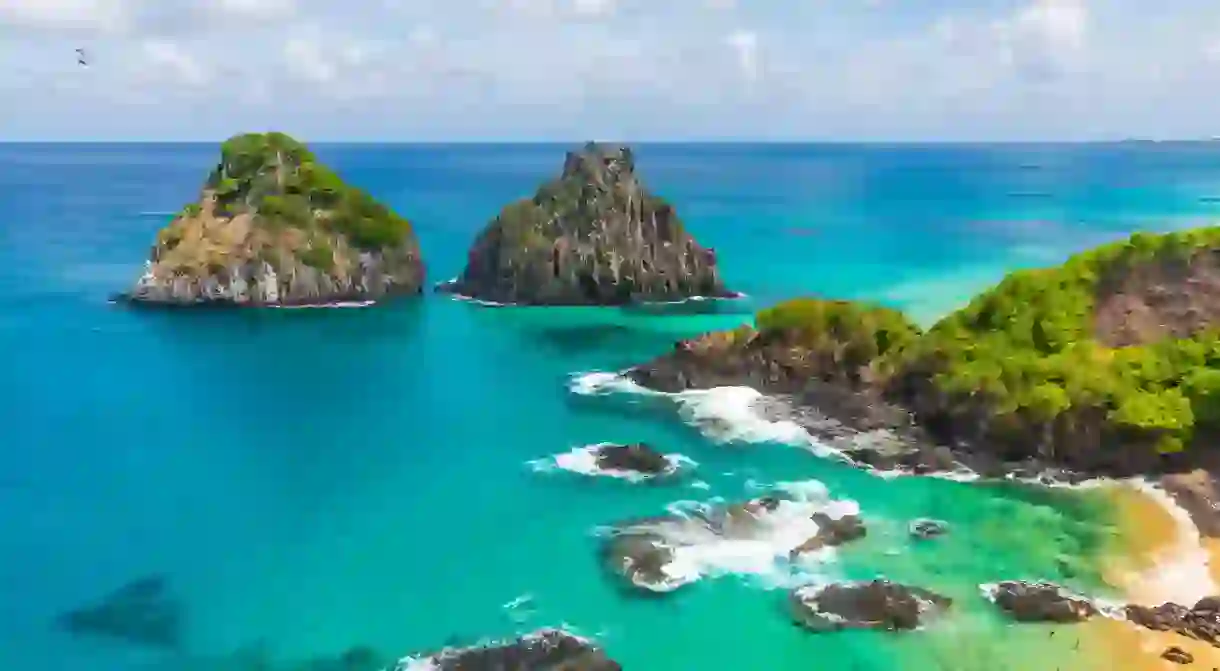Why a Visit to Fernando de Noronha Is the Trip of a Lifetime

Fernando de Noronha, off Brazil’s northeast coast, is a group of islands and a protected national marine park, where untouched beaches are set against a backdrop of rocky peaks and the dune buggies outnumber cars. Welcome to paradise.
About 350km (217mi) off Brazil’s northeast coast, this collection of 21 islands forms a volcanic archipelago that’s in a league of its own when it comes to paradise. The islands have several endemic species of wildlife and the warm sea is home to the world’s highest concentration of dolphins. Here are just some of the reasons why this is the trip of a lifetime.
Beautiful beaches
With soft, silver sand that stretches for miles edged by calm, turquoise seas, Noronha’s beaches are out of this world. Three of its shores – Praia de Leão, Baia do Sancho, and Baia dos Porcos – rank among the top five best beaches in Brazil, according to the leading Guia Quatro Rodas Praias, the country’s official guide to paradisaical coastlines.

Swim with sharks
The waters surrounding Fernando de Noronha are rich in marine life, including harmless sharks such as lemon and nurse sharks which you can snorkel with. Other species – such as tiger and hammerhead sharks – also live in the waters yet tend to live further out. Attacks on people are rare as the marine ecosystem is well-balanced.

Turtle spotting
The area surrounding Noronha has dozens of turtles who come up to the shores between December and June for hatching season. The beaches are strictly protected during this time – head to the southern beaches for a good chance of swimming with these elegant creatures.

Incredible diving
With visibility up to 30 meters and water temperatures around 30 Celsius, Noronha has excellent diving conditions and boasts around 20 diving sites starting from 20 meters deep and plunging to beyond 40 meters. Swim among ageing shipwrecks and incredible marine life, including the elusive whale shark.

Highest concentration of dolphins in the world
The waters surrounding Noronha are a paradise for dolphins that live there in large pods. The most common type of dolphin there is the spinner dolphin, so called from its typical behavior of leaping out of the water and performing up to seven complete spins before diving back into the sea.

Magnificent sunsets
The sunsets on Noronha are worlds apart from any others thanks to the calm, tropical setting and the lack of air pollution. One of the best points to see the sunset is from Boldro beach.

Epic hikes
The atalaia hike has two options: a self-guided, shorter hike or a four-hour trek with a guide that takes you through thick vegetation and along Noronha’s breathtaking coastline. Enjoy endless ocean views, dramatic cliff landscapes and plenty of opportunities for wildlife spotting.

Less tourism
As a national marine park, efforts are constantly made to protect the unique ecosystem there, which includes limiting the number of visitors allowed to enter the park per year. A maximum of 500 people are permitted to visit Noronha per day so the island remains untouched and is never heaving with tourists. Not only does this preserve the islands’ natural beauty, the tourists who are there can enjoy the tranquil, peaceful settings.

Top surfing spots
Enjoy top surfing conditions in Noronha between December and April at the Praia da Cacimba do Padre beach, where surfers can enjoy the pleasantly warm water and catch the rolling tube waves.

Dinner with a view
For a romantic dinner for two or a peaceful treat for a solo traveler, head to Mergulhão, one of Noronha’s best restaurants. With a rustic terrace overlooking the sea, the trick is to get there for a late lunch before settling down with a bottle of wine and waiting for the sun to set just across the bay.

Take a boat trip
The boat trips around Noronha take you to some of the most stunning and otherwise inaccessible beaches on the island, giving you a chance to explore some of the area’s untouched, natural gems. As the boat trawls along from beach to beach, it’s often accompanied by pods of dolphins and large seabirds flying overhead.














